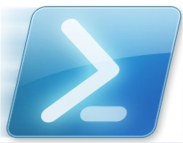Computers like powers of 2, people like powers of 10, and the fact that 210 is approximately 103 makes it easy to convert between the two powers.
A kilobyte is 1000 bytes like a kilogram is 1000 grams. But for years the former was only approximate and the latter is exact. A kilobyte was actually 210 = 1024 bytes. Similarly a megabyte was 220 or approximately 106 bytes and a gigabyte was 230 or approximately 109 bytes. Then in 1998, the International Electrotechnical Commission (IEC) introduced new units to eliminate this ambiguity. The prefix “kibi” means exactly 210, “mebi” means 220, and “gibi” means 230. (The IEC also introduced tebi, pebi, exbi, zebi, and yobi as binary analogs for tera, peta, exa, zetta, and yota.)
I’ll give arguments for and against using the new units and conclude with a note about their implementation in PowerShell.
Pro
The number of bytes in a kibibyte is about 2.5% larger than the number of grams in a kilogram. But the number of bytes in a mebibyte is about 5% larger than the number if grams in a megagram. Every time you go up by a factor of 210, the approximation degrades about another 2.5%. So a tebibyte is almost 1.1 trillion bytes. At larger sizes, the traditional prefixes become progressively more misleading and hence the need for more precise alternatives is greater.
Another advantage to the new prefixes is that “kibi, mebi, gibi” is reminiscent of “veni, vidi, vici.”
(Why does the quality of the approximation (210)k ≈ 103k by about 2.5% for each increment in k? Because by the binomial theorem, (1 + 0.024)k ≈ 1 + 0.024 k.)
Con
The only thing special about decimal powers of 2 — 210, 220, 230 etc. — is that they are approximately round numbers in base 10 that have traditional prefixes associated with them. From a computer hardware perspective, numbers like 216, 232, and 264 are more natural. If you’re not going to use the traditional prefixes, abandon them rather than create near copies. Just state the number of bytes, using scientific notation if necessary.
PowerShell
In Windows PowerShell, the units kb, mb, and gb to mean 210, 220, and 230. For example, if you type 2mb + 5gb at the PowerShell command prompt, the result is 2102272. If you really want to compute 2×106 + 5×103 and can’t do it in your head, you could type 2e6 + 5e3.
Bruce Payette commented on this feature of PowerShell in his book PowerShell in Action.
Yes, the PowerShell team is aware that these notations are not consistent with the IEC recommendations (kibabyte, and so on). Since the point of this notation is convenience and most people in the IT space are more comfortable with Kb than with Ki, we choose to err on the side of comfort over conformance in this one case. Sorry. This particular issue generated easily the second most heated debate on the PowerShell internal and external beta tester lists.


